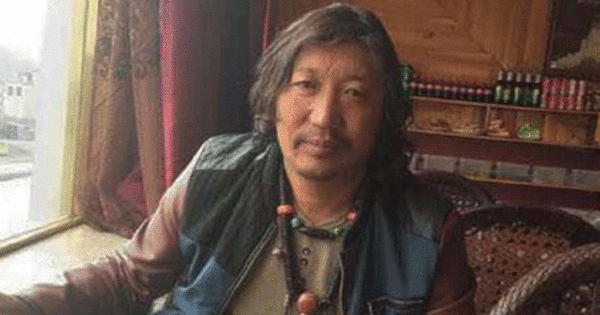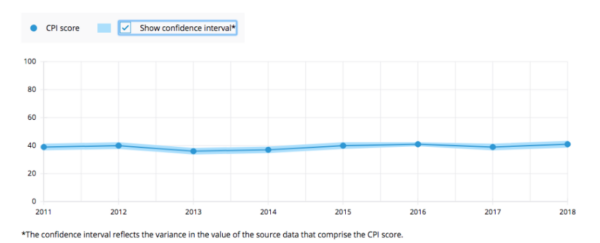Endemic corruption is an open secret in Chinese-ruled Tibet; without checks and balances or any form of transparency, official misconduct flourishes under the Chinese Communist Party. Recent state media headlines have claimed that the Party is trying to address official corruption, but an analysis of China’s efforts suggests that these efforts may be largely superficial.
Recognizing that its image and legitimacy are at stake, the Party routinely taps into its propaganda outlets to publicize the prosecution of corrupt officials in order to give the appearance of fighting corruption. In the absence of a free press and civil society, the Party freely shapes its narrative to position itself as opposed to this corruption. However, private initiatives against corruption can result in criminal charges, as was seen in the recent case of Tibetan anti-corruption and environmental activist Anya Sengdra, who was sentenced to a seven year prison term for his efforts to expose corruption and abuse of power by local officials.

Tibetan anti-corruption and environmental activist Anya Sengdra who is currently awaiting an appeal hearing on his sentence
Since the beginning of 2020, Chinese state media outlets we have monitored have publicized several reports concerning officials in Tibet Autonomous Region (TAR) being investigated for abusing their office for personal gain. The names of at least 11 officials – three Tibetan and eight Chinese – linked to corruption or alleged corruption – have been publicized by state media outlets or the TAR Discipline Inspection Commission and Supervisory Commission. Although the latest figures of officials under investigation for graft has not been made public yet, Tibet Daily reported on March 5, 2020 that “105 persons have been given disciplinary and administrative sanctions.”
Without providing much detail besides the curriculum vitae of the officials, the TAR Discipline Inspection Commission and Supervisory Commission in majority of the cases euphemistically states that the officials were under investigation for “suspected severe violations of discipline and law.” The particular details of corruption—graft, rent-seeking and skimming public funds—as articulated by Lu Xiaobo in Cadres and Corruption: The Organizational Involution of the Chinese Communist Party is crucial to understanding corrupt practices by Party officials in Tibet.
Out of the 11 officials publicized by state media outlets, which we have monitored, six cases were broadly categorized as “suspected severe violations of discipline and law,” one for “violation of political discipline,” two for “graft,” and two for being involved with an official held for graft. Considering the lack of specific details on corruption, the current anti-corruption drive can be interpreted to be an effort by the Chinese Communist Party to repair its negative public image following years of abuse by corrupt officials.
Limits of anti-corruption campaign in Tibet
Despite anti-corruption drives undertaken by successive Chinese leaders, and especially since Xi Jinping’s signature crackdown on “tigers and flies” was initiated following the 18th National
Congress of the Communist Party of China in 2012, there has been little effect in tackling this endemic socio-political problem. Transparency International’s corruption perception index (CPI) for China has barely changed despite Xi Jinping’s anti-corruption campaign since 2012. While China’s CPI score in 2012 was 39 out of 100, its score for 2019 was 41 out of 100.

Corruption Perception Index (2019) by Transparency International is licensed under CC-By-ND 4.0
By targeting individual officials who are, from time to time and without due legal process, found responsible for corruption, while at the same time not addressing the structural problems due to lack of transparency, rule of law, independent judiciary and freedom of the press, The Chinese government is not addressing the root causes of corruption in Tibet; instead of addressing structural problems, the Party is merely targeting a relatively small proportion of individual officials. The International Campaign for Tibet recognizes that the key to fighting corruption is holding public officials accountable by limiting their power, reforming the legal framework targeting corruption, and implementing structural reforms that allow democratic oversight. Such reforms are strongly opposed by the Chinese government in Beijing.
Shoring up legitimacy of the Party and popular support for Xi Jinping
Despite the massive state subsidization of the Tibetan economy, the quality of life of ordinary Tibetans is poor, in contradiction to China’s state propaganda. The TAR ranks at the bottom of areas controlled by China according to a study on the sub-national human development database jointly authored by Jeroen Smits and Iñaki Permanyer of Radboud University in Netherlands and Autonomous University of Barcelona in Spain respectively.
Speaking to the Center for Strategic and International Studies, China watchers have pointed out that the legitimacy of the Communist Party of China has been eroded significantly due to the prevalence of a culture of rampant corruption. Meanwhile, the Chinese Communist Party does not have demonstrable popular support in Tibet. Despite China’s triumphal headlines, this recent anti-corruption campaign is most clearly understood as an exercise to shore up legitimacy for the Party and popular support for Xi Jinping.

